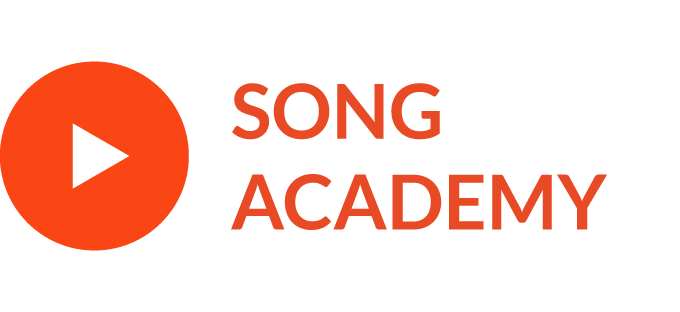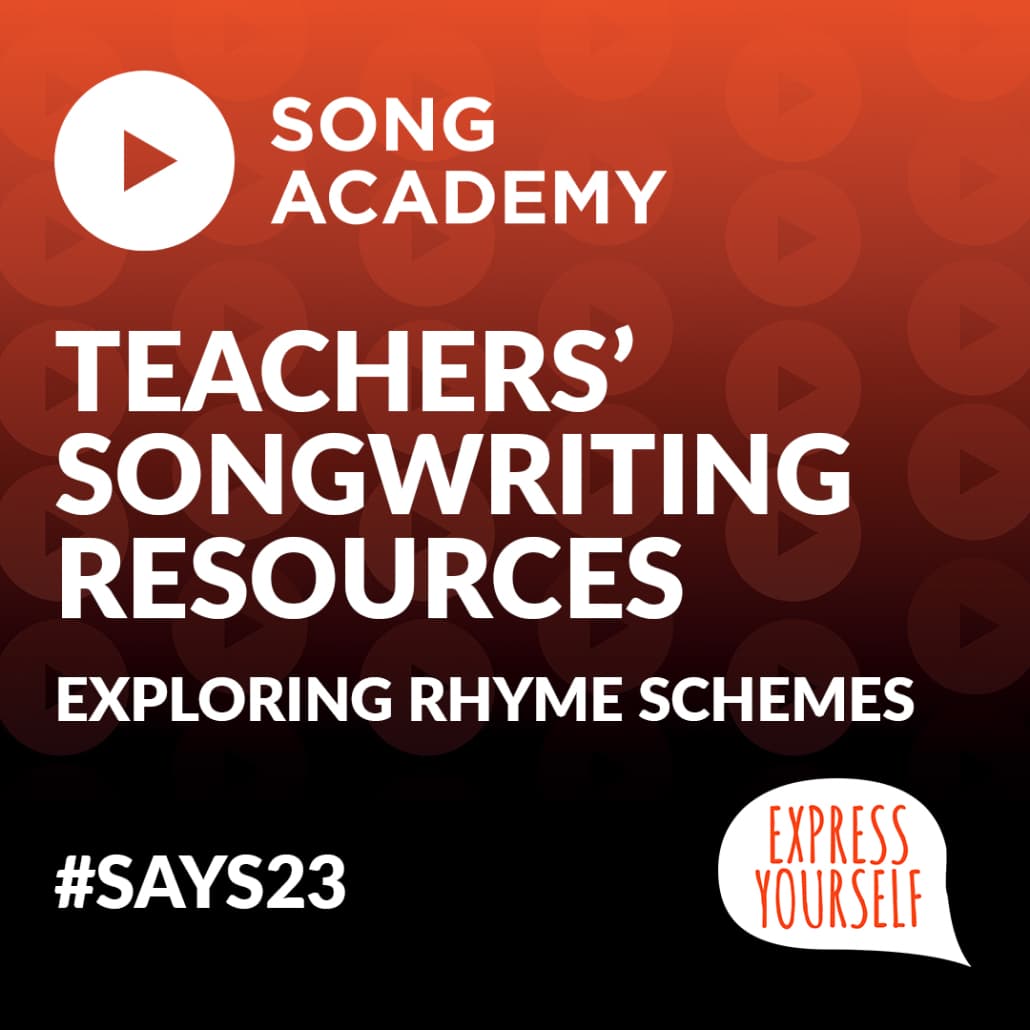Songwriting resources for Teachers – Exploring rhyme schemes
When we use rhyme in writing song lyrics, it helps to keep a rhyme scheme in mind. Rhyme helps give a song a sense of structure and make lines more memorable and catchy.
Here is a quick recap of how rhyme schemes work, if needed – Look at the lines below:
Twinkle twinkle little star A
How I wonder what you are A
Up above the world so high B
Like a diamond in the sky B
Twinkle twinkle little star A
How I wonder what you are A
The rhyming words appear at the end of each line, which is the most common type of rhyme. Each line is labelled with an alphabetical letter, and the lines that share rhyming words are labelled with the same letter. We then use that sequence of letters to describe the rhyme scheme.
Therefore, in the example above, as lines 1, 2, 5, and 6 all rhyme (star/are), and lines 3 and 4 rhyme (high/sky), we would call this rhyme scheme AABBAA.
Here’s another example:
Finding me outside A
I can’t fall asleep B
How my body aches C
How I’ve fallen deep B
This rhyme scheme is ABCB. Only lines 2 and 4 rhyme (asleep/deep), so we only label them as the same letter.
ACTIVITIES TO TRY WITH YOUNG BEGINNER SONGWRITERS
- Pick a song well-known to the group. Hand out copies of the lyrics, or display them on a board or screen. As a group, discuss and label the rhyme scheme.
- As a group, write four lines of lyrics to a simple rhyme scheme, e.g. AABB or ABAB.
- Have the group create their own four to six line rhyme scheme. They can either write lyrics using their own rhyme schemes, or swap with a partner to challenge them to write to their rhyme schemes.
- If this is going well, challenge them to write using a more complex rhyme scheme with more letters, e.g ABCBA or ABACDA









